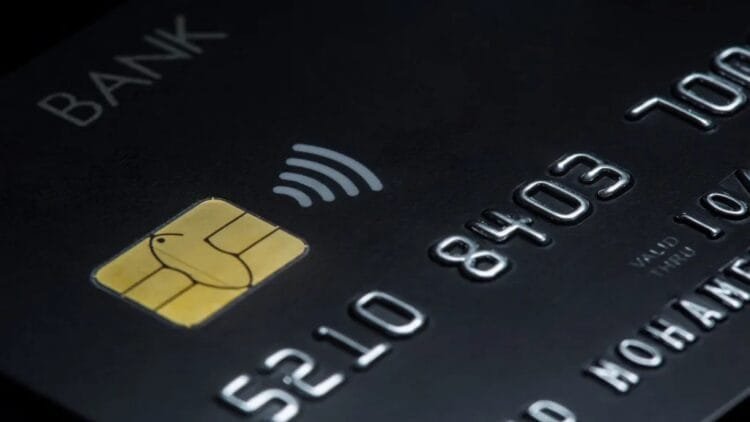Importance of Blocking Your Debit or Credit Card Immediately
In today’s rapidly evolving financial landscape, the prevalence of debit and credit card usage has significantly increased. With this rise, the risk of losing your card or falling victim to theft has also escalated. When your debit or credit card is lost or stolen, taking swift action to block it becomes paramount. This immediate response can be critical in preventing unauthorized transactions and protecting your financial information from potential fraudulent activities.
Statistics underscore the urgency of this matter. According to recent reports, financial institutions have experienced a noticeable spike in card theft and fraud incidents. For instance, the Federal Trade Commission noted a substantial 45% increase in reported cases of credit card fraud between 2020 and 2022. Moreover, data from Javelin Strategy & Research revealed that card theft victims incurred nearly $16 billion in fraudulent charges in the same period.
These alarming figures highlight the real-world impact and potential financial repercussions of not acting promptly. When a card is misplaced, thieves can quickly access your account, making unauthorized purchases and withdrawals. The longer it takes to block your card, the greater the risk of substantial financial losses.
Beyond monetary loss, the inconvenience and emotional distress caused by card fraud can be immense. Victims often need to navigate the tedious process of disputing unauthorized transactions, replacing cards, and restoring compromised accounts. Additionally, such incidents can adversely affect one’s credit score, making future financial endeavors more challenging.
Blocking your debit or credit card immediately after it is lost or stolen is a straightforward yet crucial step in safeguarding your finances. It is an essential measure to ensure that your personal information remains secure and that you mitigate the fallout from any potential fraudulent activities. By understanding the importance of prompt action, cardholders can effectively protect themselves and their assets from the increasing threat of card-related crimes.
Online Methods for Blocking Your Card
Blocking your debit or credit card online can be a swift and efficient process. Whether through your bank’s online portal or mobile app, the following steps offer a thorough guide to safeguard your finances.
First, you need to log in to your bank’s online portal or mobile app. This usually requires you to enter your unique user ID and password. Make sure the device you’re using is secure and connected to a reliable internet source. If you do not have an online banking account, you may need to register first, which typically involves a few additional steps such as providing your account number and personal details.
Once logged in, navigate to the debit/credit card details section. This section is often found under the ‘Manage Cards’ or ‘Card Services‘ tab, although the exact location can vary depending on the bank. Look for options labeled ‘Manage Cards,’ ‘Card Security,’ or ‘Card Management,’ which will direct you to comprehensive options for handling your card.
Within this section, you will need to select the option to block your card. Upon selection, you will be prompted to provide the reason for blocking. Reasons may include loss, theft, unauthorized transactions, or simply misplacement. This helps the bank understand your situation and take further steps, if necessary.
After submitting the reason, most systems will ask you to confirm your decision. Reconfirmation is crucial to prevent any accidental actions. Once you hit ‘Submit’ or a similar button, you will usually need to enter an OTP (One-Time Password) sent to your registered mobile number. This adds an extra layer of security, ensuring that only the account holder can authorize the card block.
Upon successful verification, you will receive a confirmation SMS stating that your card has been blocked. Keeping this message can be helpful for future reference or disputes. Rendered unusable, the card ensures your funds remain secure from unauthorized access.
For those unfamiliar with digital banking, these steps provide a framework to navigate through the online platform or app. Each bank’s interface differs slightly, but critical functionalities such as card blocking are typically straightforward to find and use. In case of any difficulties, most banks offer customer service to assist via phone or online chat.
Offline Methods for Blocking Your Card
While online methods for blocking your debit or credit card have become increasingly popular, there are still effective offline options available, especially for those who may not have internet access or are not tech-savvy. Understanding these traditional methods can be crucial during emergencies. Two primary offline methods include visiting your bank’s branch and using SMS services.
Visiting Your Bank’s Branch
If you find yourself in a situation where you cannot access online services, visiting your bank’s branch is a reliable option. Here are the steps to follow:
- Locate the nearest branch of your bank. A quick phone call to your bank’s customer service line can help if you’re unsure of the location.
- Upon arrival, approach the reception desk or a bank officer and explain that you need to block your card due to it being lost or stolen.
- The bank officer will verify your identity. Ensure that you carry a valid ID and any other required documents, such as your account details or the card number in question.
- After verifying your identity, the officer will initiate the process to block your card. This may involve filling out a form or providing a written statement.
- Once the process is complete, request a confirmation slip or a reference number for your records.
- Discuss with the officer the next steps, such as ordering a replacement card and any temporary arrangements for accessing funds.
Using SMS
Many banks offer the convenience of blocking your card via an SMS service. Here’s how to proceed:
- Find the designated SMS number for your bank. This information is typically available on the bank’s website or through customer service.
- Compose a message in the required format. Common formats include:
- BLOCK <space> LAST FOUR DIGITS OF YOUR CARD.
- Send the SMS to the designated number provided by your bank.
- Wait for a confirmation message from the bank. This message will confirm that your card has been successfully blocked.
- If you do not receive a confirmation SMS within a few minutes, follow up by calling customer service to ensure the process was completed.
Blocking your card offline through these methods not only ensures safety when access to online services is limited but also provides peace of mind through direct interaction with bank officials or receiving a confirmation message via SMS.
Blocking Your Card via Toll-Free Number
For individuals who favor voice services or find themselves in situations where accessing online options is not feasible, blocking your debit or credit card via a toll-free customer service number is an effective alternative. This method ensures prompt action and is accessible for all customers. Below are the comprehensive steps to guide you through the process.
First, locate your bank’s toll-free customer service number. It can typically be found on the back of your card, on your bank statements, or on the bank’s official website. Familiarize yourself with any specific customer service instructions or automated menu options listed by your bank to streamline the process.
Next, dial the toll-free number and navigate through the automated menu to select the option that allows you to speak with a customer service representative. This might involve entering specific information or selecting a series of options to reach the right department.
Once connected to a customer service representative, you will need to verify your identity. Be prepared to provide key details such as your full name, account number, the last four digits of the card in question, and possibly additional identifying information like your date of birth or recent transactions. Clearly state your intention to block the card, providing reasons if prompted.
Upon successful verification, the representative will proceed with blocking the card and will confirm once the action has been completed. It is essential to ask for any follow-up steps and a confirmation reference number for your records. This ensures that you have proof of your request should any issues arise.
To make the process even more efficient, have all the necessary information ready before making the call. This includes your card details, personal identifiers, and knowledge of recent transactions that can assist in verifying your identity. Having this information handy will expedite the process and minimize any potential delays.






















